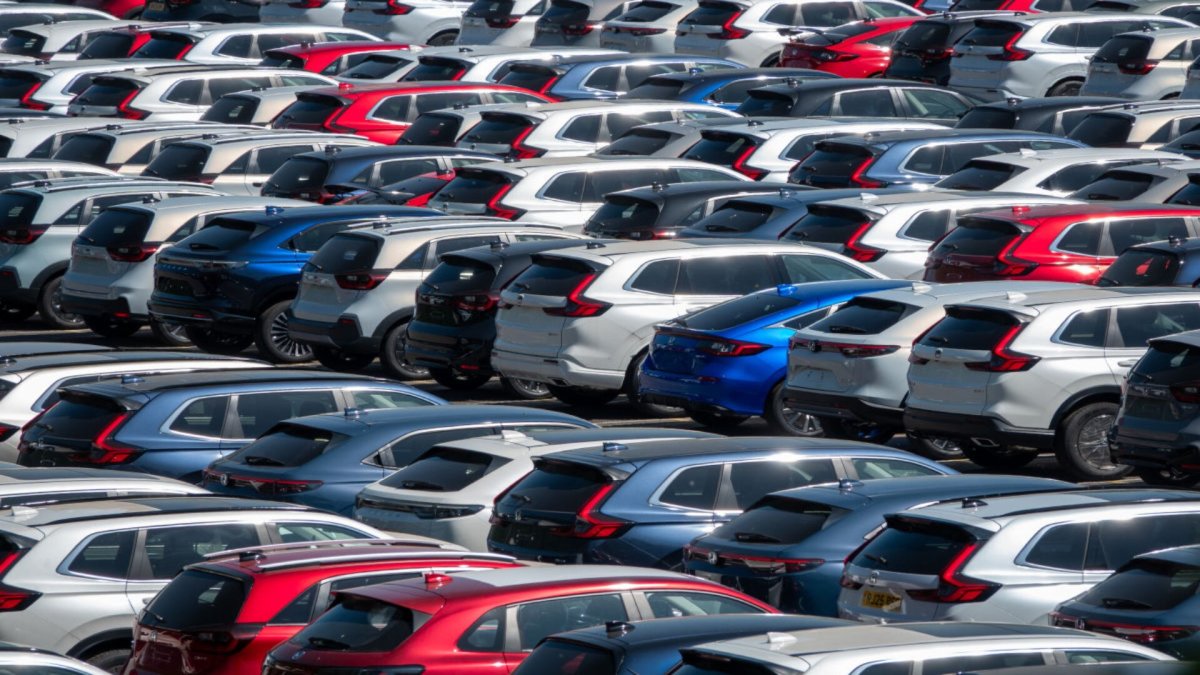The threat of tariffs has forced car companies to increase their incentive spending to get buyers through the door.
Buyers have responded to that signal, leading to a record-setting pace for car companies like Ford, General Motors, and Kia.
Ford (F) was the top-selling brand in the U.S. during the first half of the year. Ford said total sales in the second quarter rose at a rate 7x that of the overall auto industry.
However, months of negotiations have only resulted in the framework for tariff deals, and there are no concrete plans to lower them.
Average prices usually rise at this time of year as the new year models arrive on lots, but consumers will also have to deal with smaller incentives, meaning they could be facing pricing pressures from two directions this fall.

Image source: Anna Barclay/Getty Images
New vehicle prices climbed while dealer incentive spending fell in August
New vehicle transaction prices dropped sharply from their post-Covid high of $50,000 in the second half of 2024 through February. However, that trend gradually changed after it became clear that President Donald Trump was not bluffing about his trade-war ambitions.
But price increases have accelerated lately, leading to average transaction prices (ATP) in August creeping ever closer to year-ago levels.
Related: US car buyers should expect great summer deals, but there’s a catch
“While new-vehicle prices continue their upward trajectory, the pace of change remains relatively measured, more a gradual correction than a seismic shift. Costs are clearly increasing, for automakers, dealers, and buyers alike,” said Cox Automotive Executive Analyst Erin Keating.
According to Kelley Blue Book data, the new vehicle ATP was $49,077 in August, a 0.5% increase from July and a 2.6% increase year over year.
The average new-vehicle MSRP, also known as the “asking price,” rose 3.3% year over year to $51,099 in August, the most significant gain in 2025.
Of the 31 car brands tracked by Kelley Blue Book, only five recorded lower ATPs in August:
Car brands with lower August ATPs:
- Acura (down 6.5%)
- Tesla (down 5.5%)
- Stellantis’ Dodge, Ram, and Chrysler (down less than 1%)
Car companies are spending less on incentives
While Ford said that it had a record-setting pace in the first half, it reported a $36 million net loss during the period.
Last year, it reported $1.83 billion in net income.
The $800 million it lost to tariffs in the second quarter alone (Ford expects to lose about $2 billion to tariffs for the full year).
More car buyer news:
- Car buyers beware, the market appears to be shifting gears
- Latest car industry trend is great news for buyers
- US car buyers feel tariff pain as one automaker raises prices
Part of Ford’s costs include its incentive spending. But those seem to be abating with prices rising.
“This month’s increase aligns with our expectations, reflecting a market that’s adjusting to new production realities and consumer preferences without tipping into volatility,” Keating said.
Incentive spending fell slightly to 7.2% of ATP in August from 7.3% in July.
Related: Car buyers switching brands get more great deals
#car #buyers #beware #latest #data